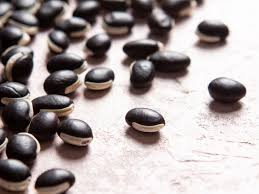Njahi, also known as Dolichos Lablab, is a popular drought-tolerant legume cultivated primarily in the Central, Western, and Eastern regions of Kenya. Known for its rich nutritional content, Njahi is a staple in many Kenyan households and has gained popularity for its high levels of potassium, proteins, iron, phosphorous, folate, and magnesium. Its versatility extends beyond human consumption, as its leaves can also be used as animal feed.
This guide will walk you through the essentials of Njahi farming in Kenya, from the ecological conditions required, planting methods, pest and disease control, to harvesting and the available market.
Varieties of Njahi Grown in Kenya
Several varieties of Njahi are grown in Kenya, each offering its own benefits in terms of yield, drought resistance, and pest tolerance. Commonly cultivated varieties include:
- KAT DL 1
- KAT DL 2
- KAT DL 3
- Rongai
- DL 1002
- DL 1009
These varieties have been bred to adapt to Kenyan conditions and offer different growth rates, ensuring farmers can choose the best option for their region and climate.
Ecological Conditions for Njahi Farming
Njahi thrives in specific climatic and soil conditions. For optimal growth and yield, it is essential to meet the following ecological requirements:
- Soil Type: Well-drained sandy-loamy soils with a pH between 5.5 and 6.5.
- Altitude: Grows best in altitudes ranging from 500 to 1,800 meters above sea level.
- Temperature: The ideal temperature range for Njahi farming is between 18°C and 28°C.
- Rainfall: Njahi requires between 400 mm and 750 mm of rainfall per year. Although drought-tolerant, it performs better with consistent rainfall.
Njahi Planting in Kenya
Njahi can either be planted directly in the field or grown in a nursery and transplanted later. However, most Kenyan farmers prefer direct planting in the field, which is often more efficient and cost-effective.
Best Time to Plant
Planting is ideally done at the onset of the rainy season to ensure the seeds have sufficient moisture for germination. Organic manure should be applied during planting to enrich the soil, promoting healthier growth. Additionally, about 30 kg of DAP fertilizer per acre is recommended to further boost soil fertility.
Spacing
For optimal growth, Njahi should be planted with a spacing of 30 cm between plants and 45 cm between rows. This spacing ensures that the plants have enough room for proper nutrient and water absorption while reducing competition.
Weeding
Njahi fields require regular weeding to prevent competition for nutrients, water, and sunlight. Early and consistent weeding significantly improves crop health and yield.
Pests and Diseases in Njahi Farming
Like many crops, Njahi is susceptible to various pests and diseases that can affect its productivity. Farmers should be vigilant in identifying and controlling these threats.
Common Diseases
- Stem Rot
- Anthracnose
- Powdery Mildew
- Bacterial Leaf Spot
Common Pests
- Nematodes such as Meloidogyne incognita and Meloidogyne hapla are common pests that attack Njahi plants.
Control Measures
To manage pests and diseases, farmers can apply systemic insecticides and ensure proper field hygiene. Rotating crops and using resistant Njahi varieties can also help mitigate pest and disease infestations.
Njahi Harvesting
Njahi is ready for harvest about 3 to 5 months after planting, depending on the variety and growing conditions. Harvesting should be done when the pods have dried and are brown in color. Timely harvesting ensures the beans retain their quality and nutritional value.
Market for Njahi in Kenya
Njahi is in high demand both locally and internationally due to its superior nutritional value compared to other beans. In Kenya, the legume is a staple food in many homes and is particularly popular among communities in the Central region.
In local markets, Njahi fetches higher prices than other beans, largely due to its limited supply. A 90-kg bag of Njahi can sell for between Kshs 5,000 and Kshs 7,000, depending on the season and demand. This makes Njahi farming a lucrative venture for farmers looking to diversify their crops and increase profitability.
Conclusion
Njahi farming offers an excellent opportunity for Kenyan farmers, especially those in regions with erratic rainfall, as the crop is both drought-tolerant and highly nutritious. By selecting the appropriate variety, adhering to the recommended planting methods, and practicing effective pest and disease control, farmers can achieve good yields and tap into the growing demand for this valuable legume.
With the market for Njahi expanding both locally and internationally, farmers stand to benefit from cultivating this high-value crop, making it a viable addition to their farming ventures.





